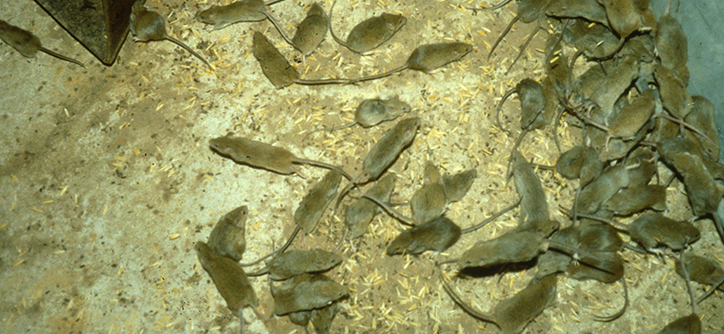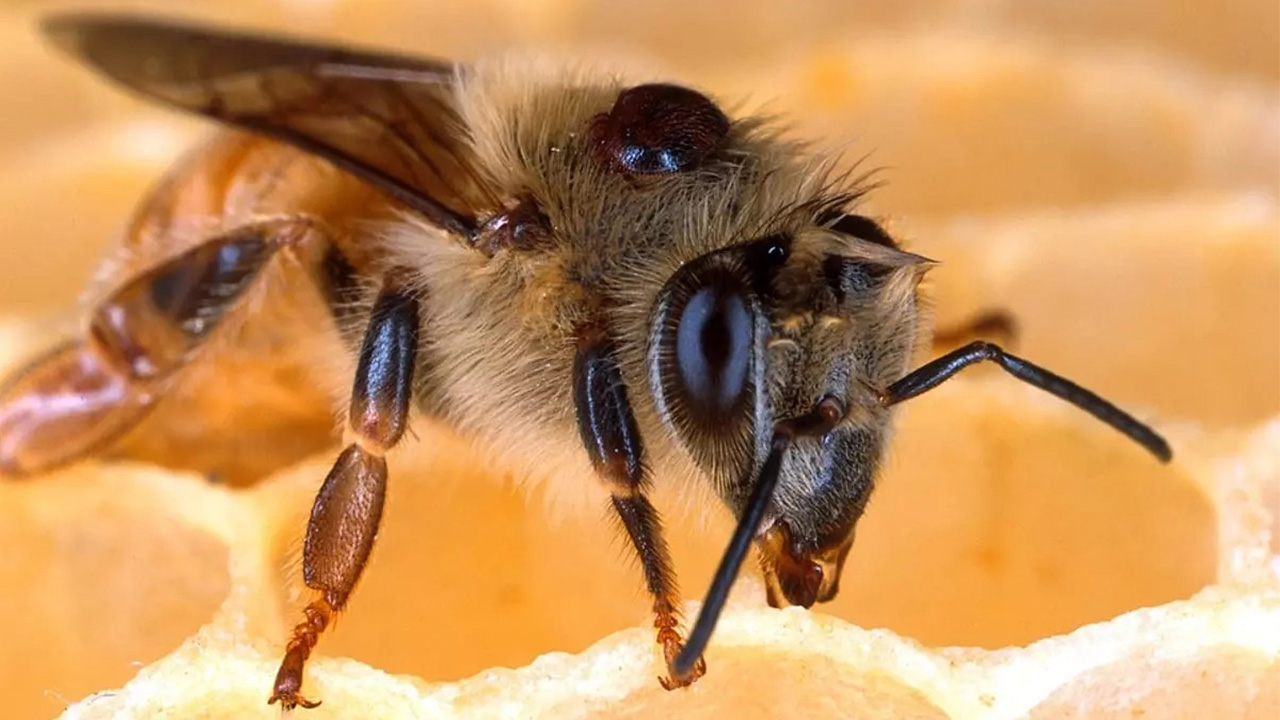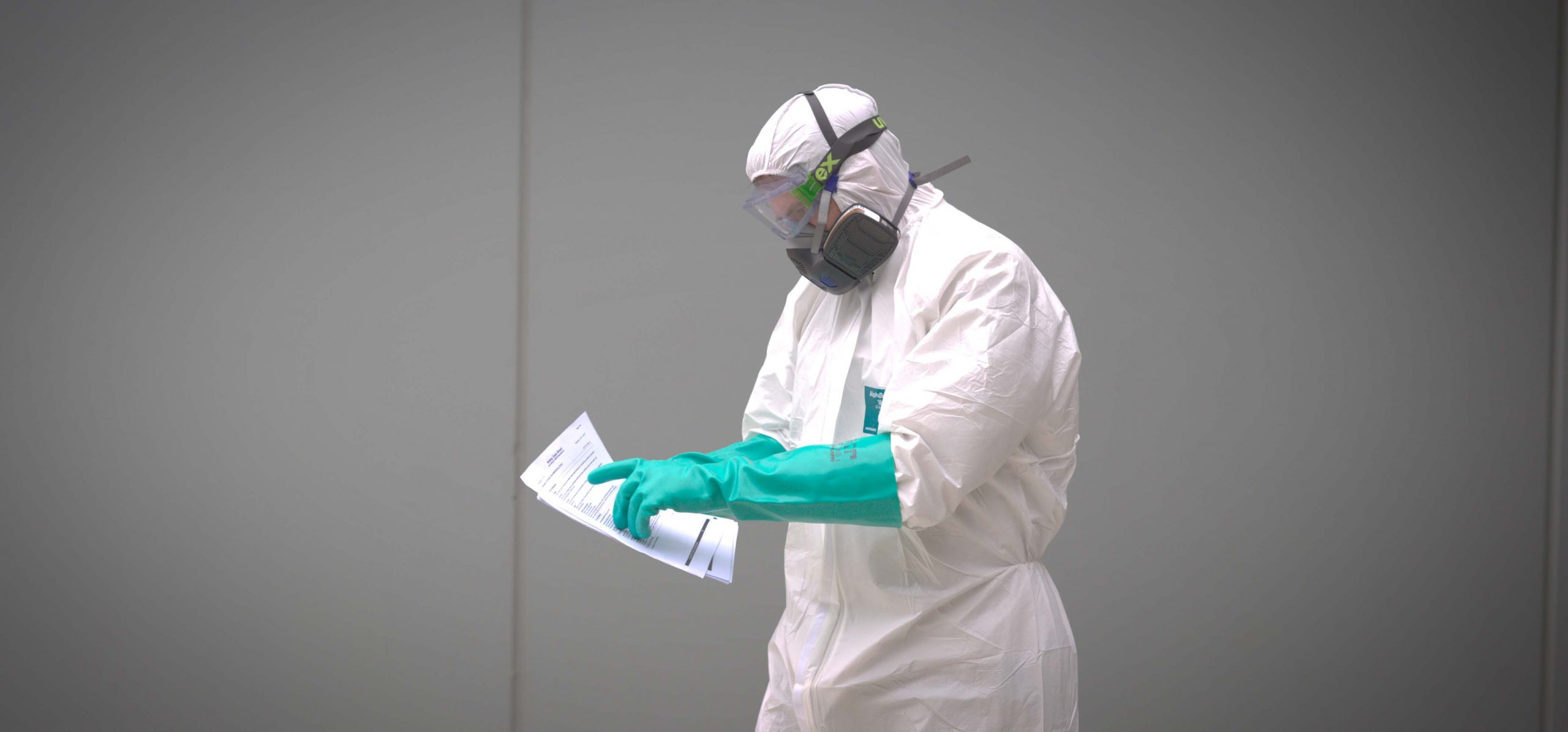According to CSIRO, Australia’s worst mouse plague of 1993 cost more than 96 million dollars, (close to 180 million in today’s dollar terms).
Photo courtesy
The mice not only damaged thousands of hectares of crops but ate through electrical cabling and insulation, as well as a damaging farm machinery and equipment.
Well it now looks like in some areas, that the mice are back. This is not surprising given the bumper harvests in recent times and the spillage rates in some areas with inclement weather. Mouse Alert on Feralscan reports that there are ‘High populations of mice in Victoria and South Australia and mice are likely to cause damage at sowing.” There are “ Moderate populations of mice in Ravensthorpe and Esperance (WA), Eyre Peninsula and Yorke Peninsula (SA), Southern, Central and Northern NSW and Darling Downs (QLD) and mice damage could occur. Mouse abundance/activity is patchy.”
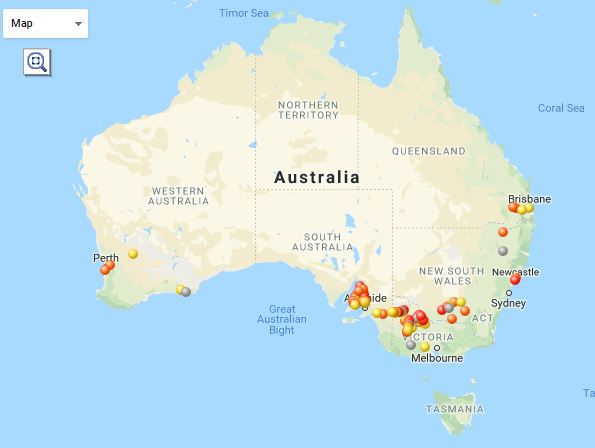
 Source: www.feralscan.org.au/mousealert/map.aspx
Source: www.feralscan.org.au/mousealert/map.aspx
Monitoring/Record Sightings
Note that sightings can be logged via the MouseAlert App – part of the FeralScan phone App available in the iTunes store – or at the MouseAlert website, all of which helps research as well as bait suppliers plan production runs and growers get a heads up as to the need to monitor their crops. Remember that stubble can hide mice activity to some extent so get out there and actively monitor your crops.
To help monitor numbers use the Mouse Chew Cards, available at https://www.feralscan.org.au/mousealert/pagecontent.aspx?page=mouse_chewcard
The link includes instructions on how to use the chew cards and relates the numbers of squares per card eaten to indicate mouse numbers as shown below:
If <10 squares per card are eaten = low‐moderate mouse activity.
If >10 squares per card are eaten overnight (on average across the 10 cards) = moderate to high mouse activity, with possibility of some damage.
If >20 squares per card are consumed (on average across the 10 cards) = high to very high mouse activity, damage is likely and an ongoing mouse problem is present.
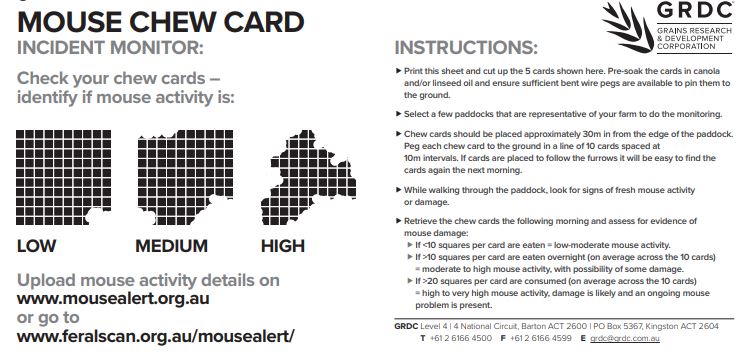 Steve Henry, a Csiro researcher has told various reporters that one pair of mice can have 500 offspring in a season. Given a ball park action threshold for baiting at 200 mice per hectare, it is fairly apparent that given the right conditions, mice plagues of 500 to 800 mice per Hectare can become a reality relatively quickly and so many proactive grain growers in the red areas of the map above put out bait either at sowing or within 28 hours of sowing.
Steve Henry, a Csiro researcher has told various reporters that one pair of mice can have 500 offspring in a season. Given a ball park action threshold for baiting at 200 mice per hectare, it is fairly apparent that given the right conditions, mice plagues of 500 to 800 mice per Hectare can become a reality relatively quickly and so many proactive grain growers in the red areas of the map above put out bait either at sowing or within 28 hours of sowing.
Baiting options
GRDC’s (1) Five quick tips for mouse control at seeding:
- Monitor paddocks (as discussed above)
- Apply broad scale zinc phosphide bait : According to the label, at the prescribed rate of 1kg/ha.
- Calibrate spreader: Whether it is a 12-volt broadcast spreader or an adapted trailing or linkage spreader, ensure the spreader is delivering the bait rate accurately with an initial calibration (and checks of rates over known areas).
- Timing is critical : Delays of 4-5 days in baiting after seeding can give mice time to find crop seed. Apply bait at seeding or within 24 hours : While seed is still covered by soil increasing the likelihood of mice taking the bait, prior to finding the seed. Rebait through the season as needed.
- Minimise sources of food and shelter : Control weeds and volunteer crops along fence lines, clean up residual grain by grazing or rolling stubbles.
Sowing has been delayed in certain areas due to a lack of rain, but the dryness shouldn’t lull growers into thinking the lack of water will wipe out the mice given they get enough moisture to survive out of the grain itself.
Bait Supply?
Tom Nancarrow of ABC Rural states (2) “with forecasts of a second bumper breeding year for mice in cropping areas of Australia, South Australian farmers have been loading up on bait to limit potential crop damage”.
Licensed bait manufacturer, Scott Hoyle, said demand for bait was “far exceeding last year”.
“At this stage we have plenty of product on hand, but we are certainly manufacturing as hard as we can go at the moment,” Mr Hoyle said.
“As the weather is cooling off we are certainly starting to see them move into the sheds now, but there is a lot of activity in the paddock.”
“Last year saw an explosion of the animal in cropping regions around the country, with one bait retailer citing an increase in sales of around 400 per cent in some growing areas.”
Given zinc phosphide is a Dangerous Poison and as such an S7 poison, you will need chemical user training at the AQF level 3 such as Chemcert to purchase/use the bait (requirements vary by state) so give Chemcert a ring (contacts below) so we can help you with your training needs in any of the southern states. At 3 dollars or so, a hectare for baiting, it seems that ground spreading of zinc phosphide is a good precautionary measure for those with moderate to high mouse numbers, so ensure your product availability, your Chemcert is up to date and keep records of bait application.
ChemCert Contact:
Freecall: 1800 444 228
info@ChemCert.com.au
1. https://grdc.com.au/news-and-media/news-and-media-releases/north/2018/04/paddock-practices-mouse-control-practical-tips-for-mouse-control-now-that-planting-is-here
2. http://www.abc.net.au/news/rural/2018-03-27/mouse-bait-demand-as-farmers-brace/9588152

